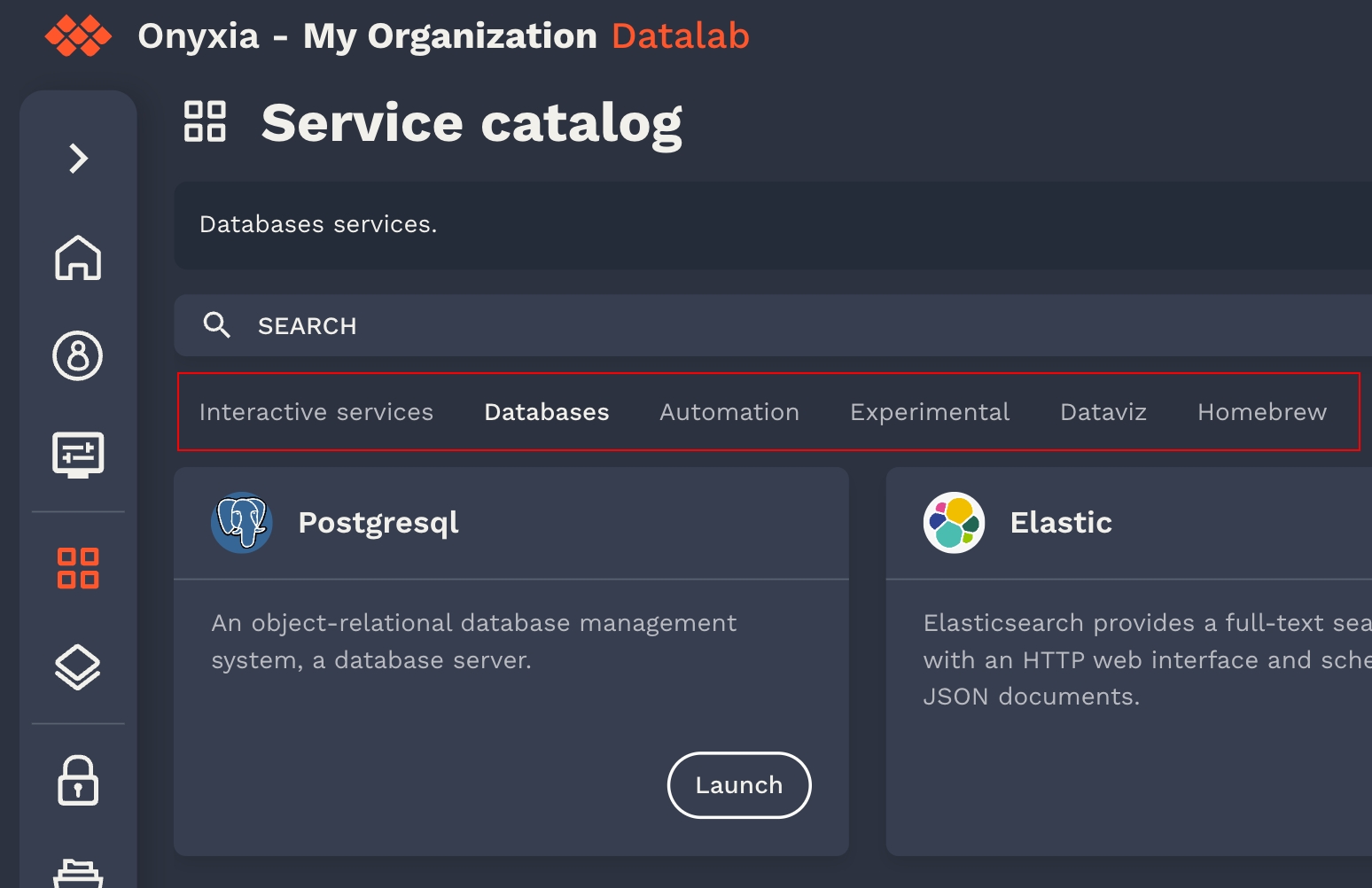🔬Catalog of services
Unserstand how Onyxia catalogs work and potentially create your own!
Every Onyxia instance may or may not have it's own catalog. There are four default catalogs :
This collection of charts helps users to launch many IDE with various binary stacks (python , R) with or without GPU support. Docker images are built here and help us to give a homogeneous stack.
This collection of charts helps users to launch many databases system. Most of them are based on bitnami/charts.
This collection of charts helps users to start automation tools for their datascience activity.
This collection of charts helps users to launch tools to visualize and share data insights.
You can always find the source of the catalog by clicking on the "contribute to the... " link.
If you take this other instance, it has only one catalog, helm-charts-sill.
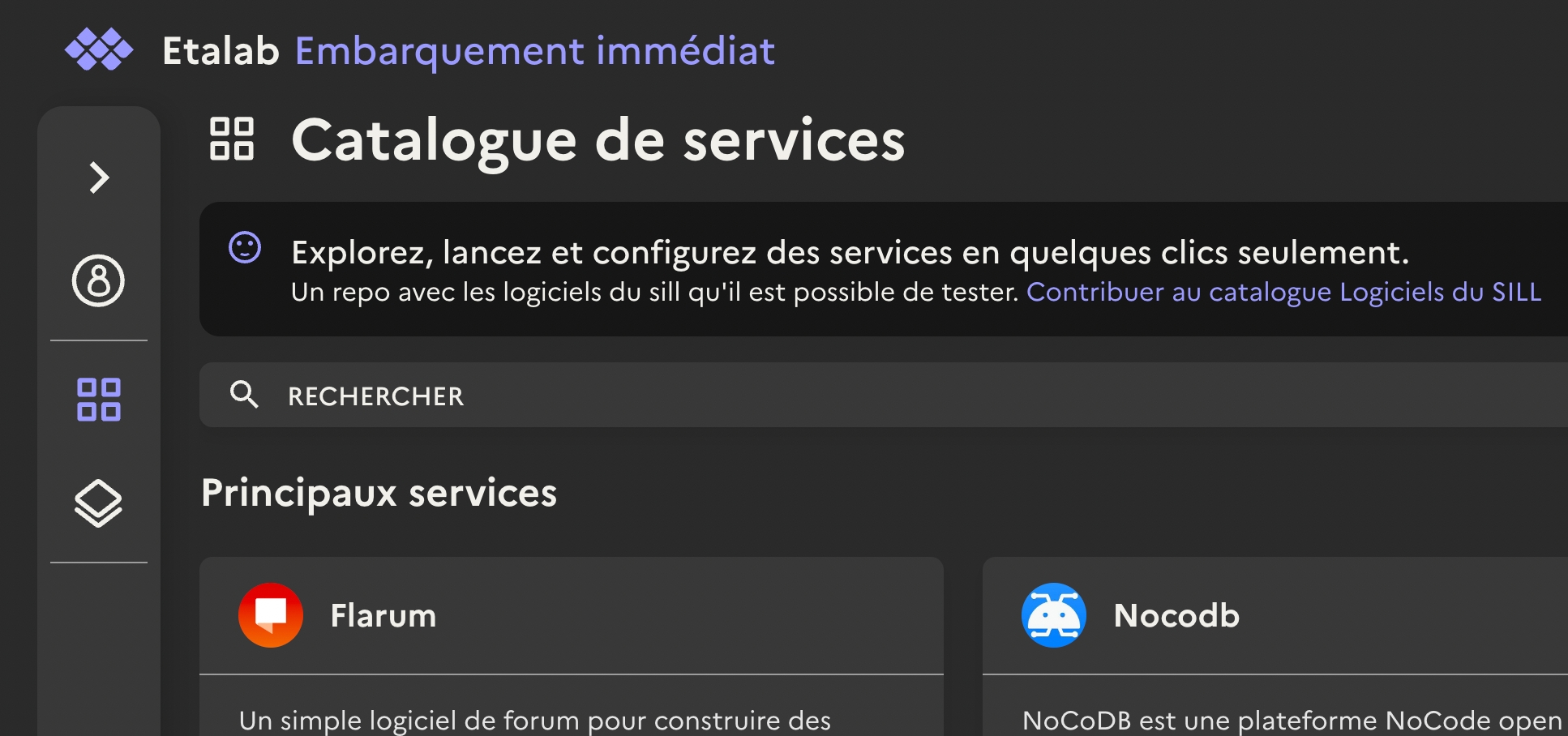
Using your own catalogs (helm charts repositories)
If you do not specify catalogs in your onyxia/values.yaml, these are the ones that are used by default: See file.
To configure your onyxia instance to use your own custom helm repositories as onyxia catalogs you need to use the onyxia configuration onyxia.api.catalogs.
Let's say we're NASA and we want to have an "Areospace services" catalog on our onyxia instance. Our onyxia configuration would look a bit like this:
Customizing your helm charts for Onyxia
In Onyxia we use the values.schema.json file to know what options should be displayed to the user at the service configuration step and what default value Onyxia should inject.
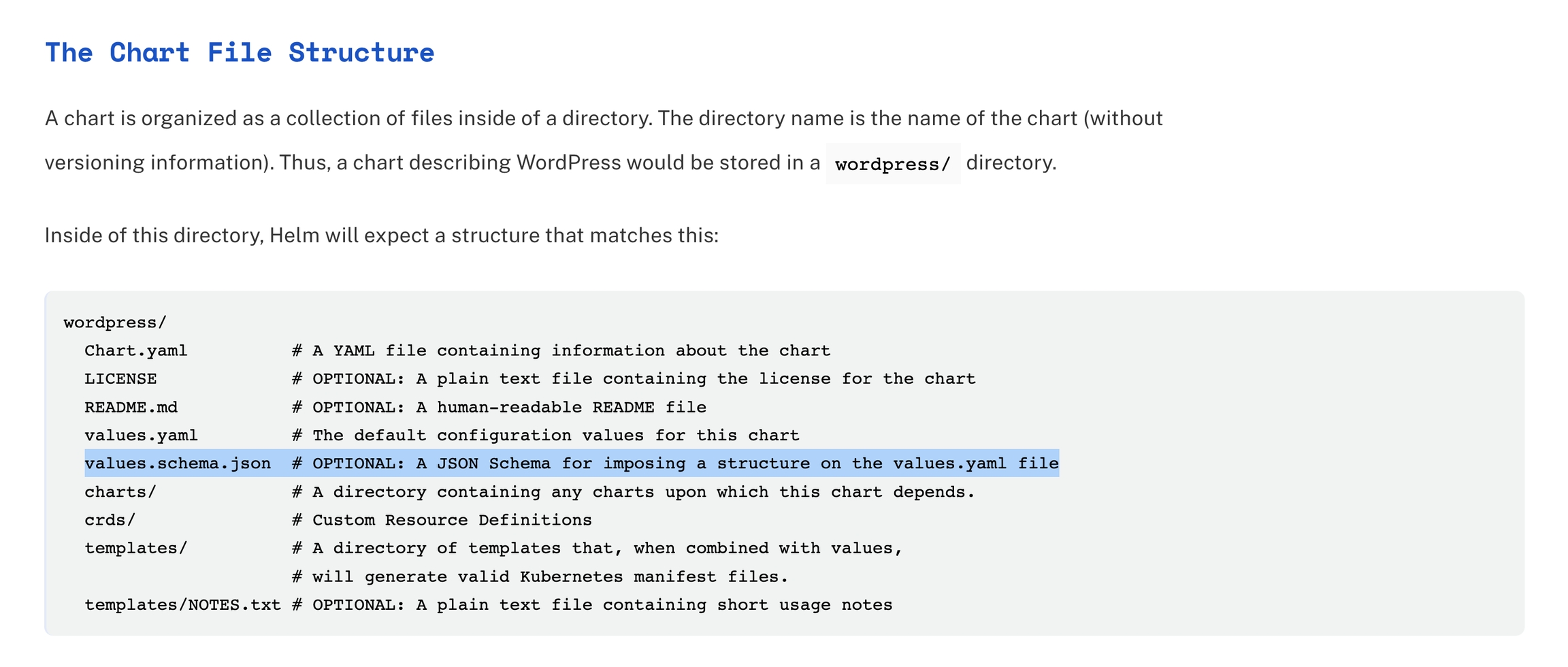
[x-onyxia] overwriteDefaultWith
Let's consider a sample of the values.schema.json of the InseeFrLab/helm-charts-interactive-services' Jupyter chart:
And it translates into this:
Note the "git.name", "git.email" and "git.token", this enables onyxia-web to pre fill the fields.
If the user took the time to fill its profile information, onyxia-web knows what is the Git username, email and personal access token of the user.
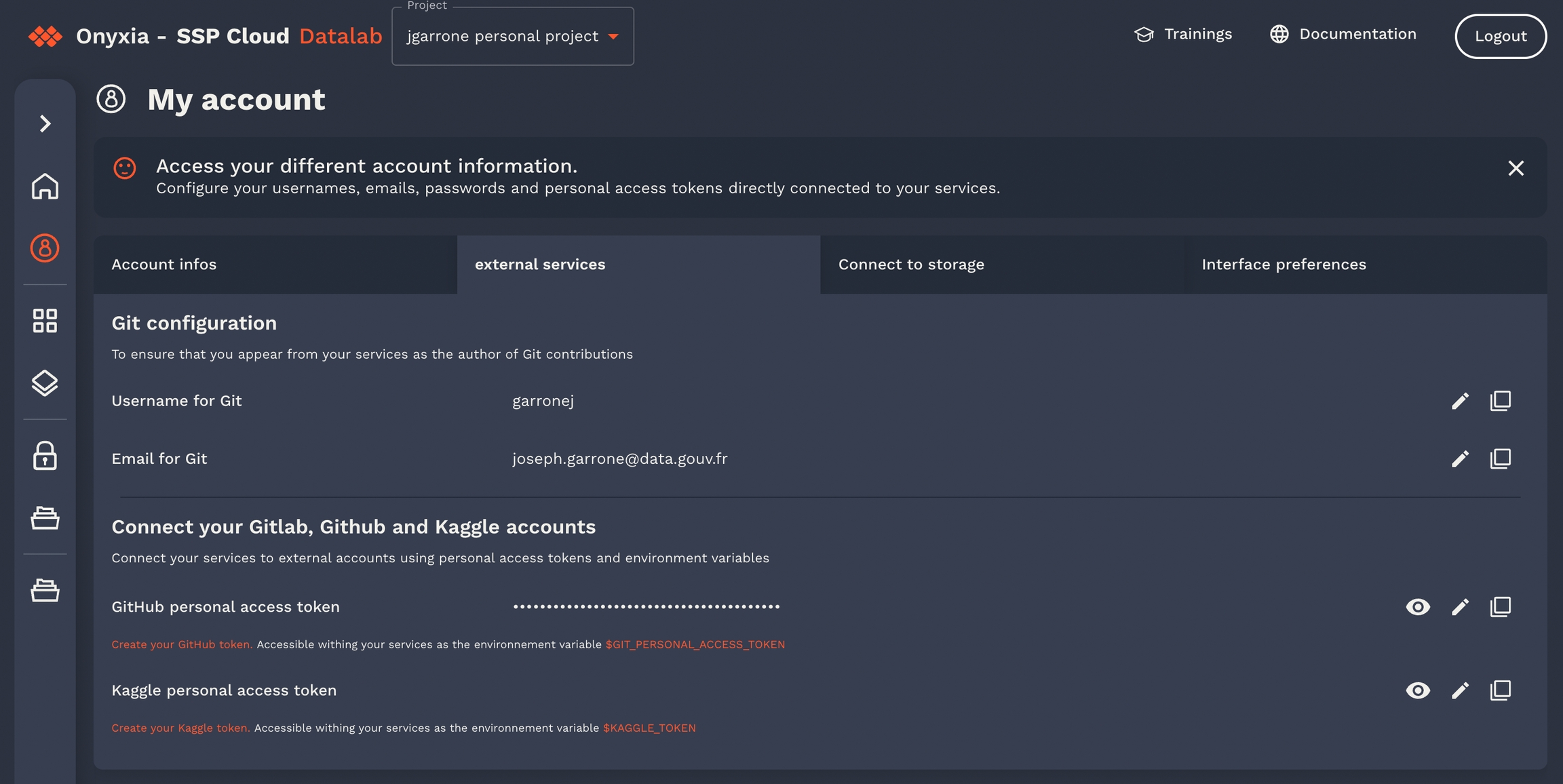
Here is defined the structure of the context that you can use in the overwriteDefaultWith field:
You can also concatenate string values using by wrapping the XOnyxia targeted values in {{}}.
[x-onyxia] overwriteListEnumWith
This is an option for customizing the options of the forms fields rendered as select.
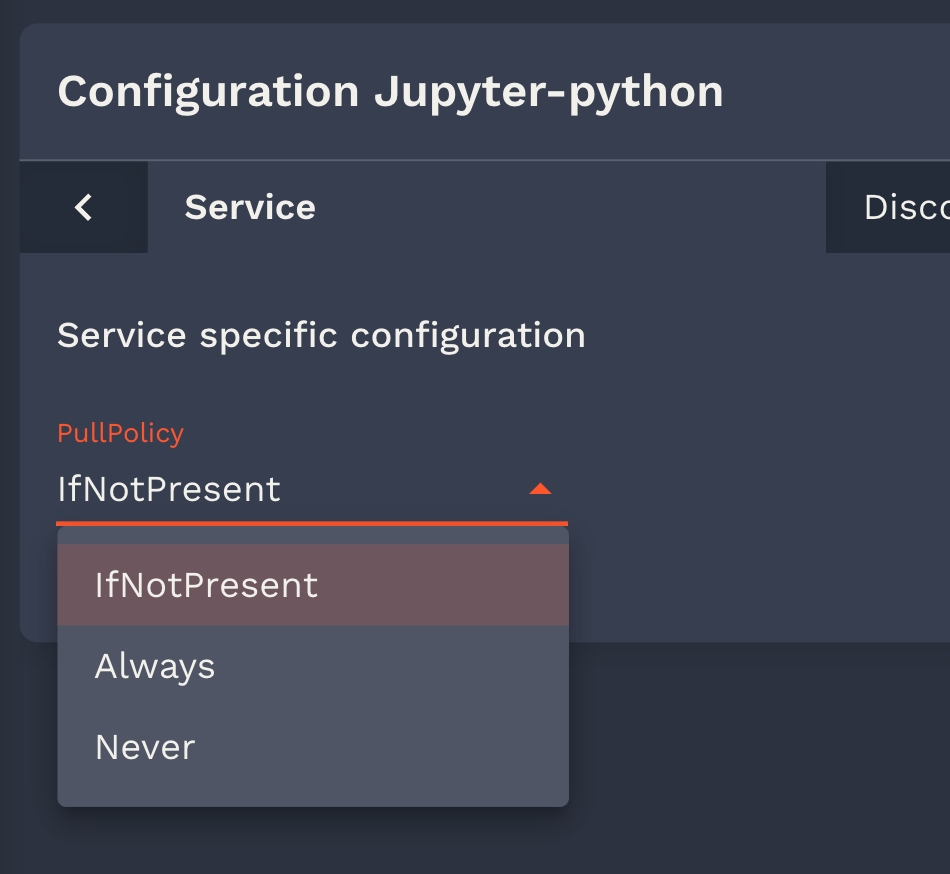
In your values shema such a field would be defined like:
But what if you want to dynamically generate the option? For this you can use the overwriteListEnumWith x-onyxia option. For example if you need to let the user select one of the groups he belongs to you can write:
[x-onyxia] overwriteSchemaWith
Certain elements of a Helm chart should be customized for each instance of Onyxia, such as resource requests and limits, node selectors and tolerations. For this purpose, chart developers can use x-onyxia.overwriteSchemaWith to allow administrators to override specific parts of the schema. Our default charts use this specification.
You can see here the list of default schemas included in the Onyxia API. We also provide examples demonstrating how you can customize your services using our interactive services charts with the provided schemas.
The following node selector schema provided by Onyxia API is a generic definition, which may not provide the best experience for a specific Kubernetes cluster in Onyxia.
As an administrator of Onyxia, you can provide your own schemas to refine and restrict the initial schemas provided in the Helm chart.
node selectors
You can provide this schema to allow your users to choose between SSD or HDD disk types, and A2 or H100 NVIDIA GPUs. Any other values or labels are disallowed, and Onyxia will reject starting a service that does not comply with the provided schema.
rolebindings for IDE pods
This is the default role for IDE pods in our charts. It is very permissive, and you may want to restrict it to view-only access.
Here is the refined version
resources for IDE
You may want to modify the slide bar for resources
How to overwrite a schema or create a new one ?
You can directly create file in the values of onyxia helm charts
Last updated
Was this helpful?
